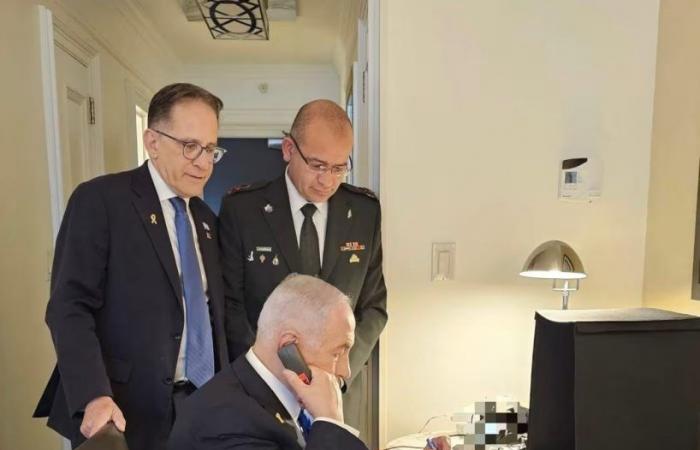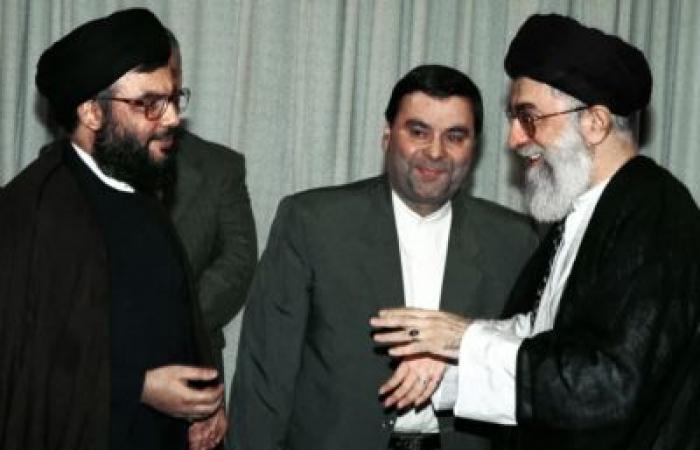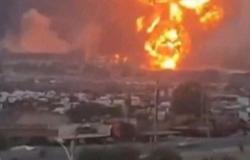The body of the Hezbollah leader, killed Friday by the Israeli army, was extracted from the rubble on Sunday in the southern suburbs of Beirut. His assassination, caused by a salvo of particularly explosive bombs which fell on the headquarters of the Shiite militia, caused a shock wave in Lebanon and the region. It also raises many questions: how could such an operation succeed? How long has it been prepared? By what means did the Israeli services become aware of the arrival of Hassan Nasrallah, holed up for years in a secret location and whose movements were extremely limited?
A few minutes before the operation
Friday September 27, around 6 p.m., several Israeli planes flew over the sky of the southern suburbs of Beirut. Their objective: to strike a block of six buildings in Haret Hreik, identified as the Hezbollah command center. A meeting of its high-ranking members is to be held, bringing together a dozen people, in an underground room located about 20 meters below the ground, describes the Wall Street Journal. According to the American newspaper, citing sources close to the armed group, the meeting was to allow some to express their “frustration” with the fact that Iran is preventing them from responding more vigorously to Israeli attacks. It has been several days since the Israeli forces carry out targeted strikes in southern suburbs to kill high-ranking Hezbollah officials.
“The information reaching Israel indicates that among the participants is Hassan Nasrallah,” relates https://twitter.com/clashreport/status/1840324929402659249the Saudi national channel in a reconstruction video. “The man entered this block of 6 buildings and Israel does not know in which the meeting will take place,” the media continues. According to the newspaper The ParisianHassan Nasrallah reportedly arrived there by car, accompanied by the Iranian commander of the al-Quds regiment, the elite unit of the Revolutionary Guards, while the funeral of Mohammad Hussein Srour, commander within of Hezbollah’s drone unit on the southern front, killed the day before in an airstrike.
Israeli Prime Minister Benjamin Netanyahu approved the airstrike targeting Hezbollah leaders from a hotel room in New York on Friday. The Prime Minister’s Office edited the image to hide objects on the desk. Photo: Office of the Israeli Prime Minister/Zuma Press
“The Israelis, who operate aerial surveillance 24 hours a day, are sure of their move,” assures the French daily, continuing: “The Israeli services waited until everyone was in the room where the Shiite militia is planning its military operations ( …), to give the order to bomb.” A few hours earlier, Israeli Prime Minister Benjamin Netanyahu was at the United Nations in New York to give a speech to an almost empty room. “We will not accept that a terrorist army perched on our northern border is capable of perpetrating another massacre of the type of October 7,” he declared about Lebanon. After his speech, the Israeli leader isolated himself in a cabinet, accompanied by two advisers. A photo, shared an hour after the attack, captures the moment when Benjamin Netanyahu, on the phone, gives the green light to launch the operation.
How did the operation take place?
At 6:17 p.m., a detonation shook the earth and resonated in Beirut up to 40 kilometers away. More than 80 bombs are dropped in a few seconds. After analyzing a video posted on the Israeli army’s official Telegram channel on Saturday, with the caption “Israeli Air Force fighter jets involved in the elimination of Hassan Nasrallah and Hezbollah’s central headquarters in Lebanon”, several international media were able to identify the nature of the military equipment used in the operation.
Read also
Who will succeed Hassan Nasrallah?
The video shows at least eight planes in a row armed with 900 kilo bombs. Some, around fifteen, are identifiable as the BLU-109 model, American-made and equipped with a JDAM guidance kit, reports the daily Haaretz. These bombs are called “bunker busters”. They allow one to penetrate the ground before exploding, each explosion paving the way for the next. Exports of this model by the United States were suspended last May, during the Israeli offensive in Rafah, while a new delivery to Israel was planned, Washington fearing that the use of these extremely destructive bombs would lead to significant civilian casualties in the Gaza Strip.
The six buildings of Haret Hreik are pulverized, reduced to an enormous crater around thirty meters deep. The conditions for survival of those who were in the building were zero and the Israeli army quickly announced the death of Hassan Nasrallah.
How long had the operation been planned?
According to three senior Israeli defense officials cited by the New York Timesthe leaders of the Jewish state had been aware of Hassan Nasrallah’s whereabouts for several months. They made the decision to strike earlier this week, at a time when Israeli politicians were talking with their American counterparts about the possibility of a ceasefire in Lebanon. “They thought they only had a short window of opportunity before the Hezbollah leader disappeared to another location,” reports the NOW. Operational planning for the attack would have taken several months, in particular because military officials were trying to determine how to “pierce an underground bunker in southern Beirut with a series of planned explosions,” continues the American daily.
But according to Reuters, Israel’s ability to reach the Hezbollah leader goes back much further. Citing a source “close to Israeli strategy” who spoke less than 24 hours before the strike, Reuters reports that Israel spent twenty years focusing its intelligence efforts on Hezbollah and that it could strike Nasrallah when he wanted him, including in his headquarters. Benjamin Netanyahu and his close entourage actually authorized the attack on Wednesday, say two Israeli officials.
Read also
Assassination of Nasrallah: “Today, we realize that Khamenei is a naked king”

According to an analysis of Haaretz particularly scathing against the Israeli Prime Minister, Benjamin Netanyahu would nevertheless have hesitated for a long time before approving the assassination of Nasrallah, thus opposing his Defense Minister Yoav Gallant, who was putting pressure in this direction. The reason? “He did not want Operation New Regional Order (the name given by Israel to the operation to eliminate Hassan Nasrallah) to be carried out before the end of his Operation Shabbat in Manhattan,” the journalist referring to the Prime Minister’s visit to the United States. Because “it was already clear that the trip was exactly what it was intended to be: a weekend of pleasure and self-aggrandizement”, pins the Haaretz.
According to the WSJthe exact timing of the strike constituted an opportunity, Israeli officials said. It was ordered when Israeli intelligence learned of the meeting hours before it took place. “We had real-time intelligence indicating that Nasrallah was meeting with many senior terrorist leaders,” Israeli army spokesperson Nadav Shoshani said on Saturday. The latter did not specify how the information could have reached them, but certified that Hezbollah leaders had met to plan attacks against Israel.
How was Israel informed of the imminent arrival of Hassan Nasrallah?
On this subject, several theories abound, some pointing to Iranian infiltration. According to a “well-informed Lebanese security source” cited by The Parisianan “Iranian mole” allegedly transmitted the information to the Israeli army on Friday afternoon. But according to the Reuters agency, the infiltration by Israeli informants would rather have come from the ranks of the Shiite militia, faced today more than ever with “the enormous challenge of stopping the infiltration into its ranks which has allowed its archenemy Israel to destroy weapons sites, booby trap its communications and assassinate the veteran leader, whose location had been a closely guarded secret for years.”
The body of the Hezbollah leader, killed Friday by the Israeli army, was extracted from the rubble on Sunday in the southern suburbs of Beirut. His assassination, caused by a salvo of particularly explosive bombs which fell on the headquarters of the Shiite militia, caused a shock wave in Lebanon and the region. It also raises many questions…
- -







